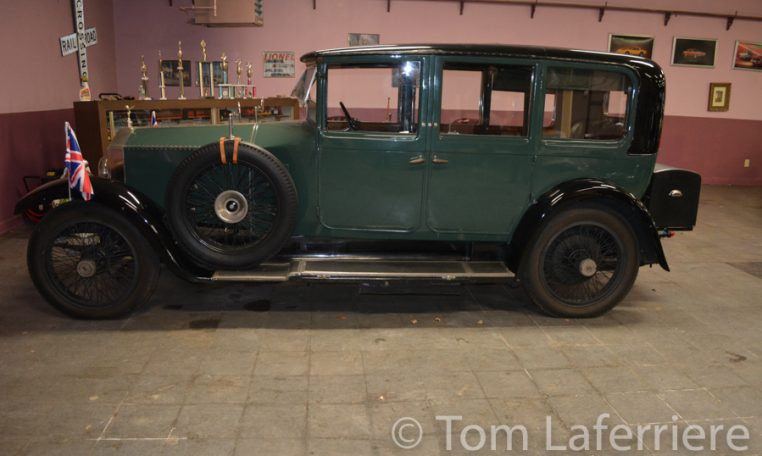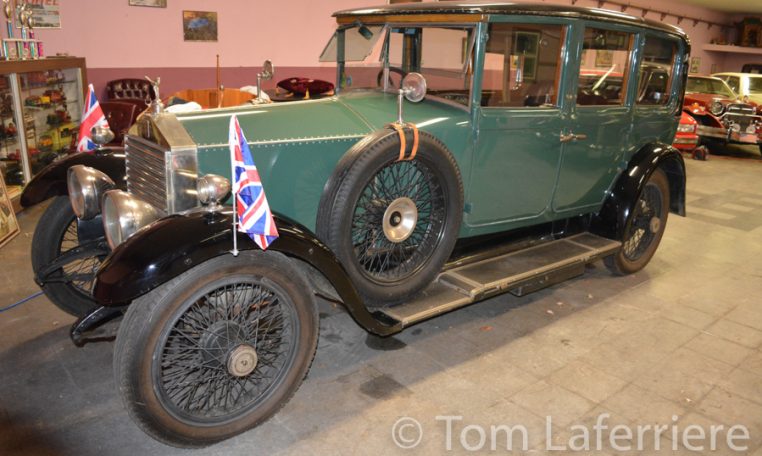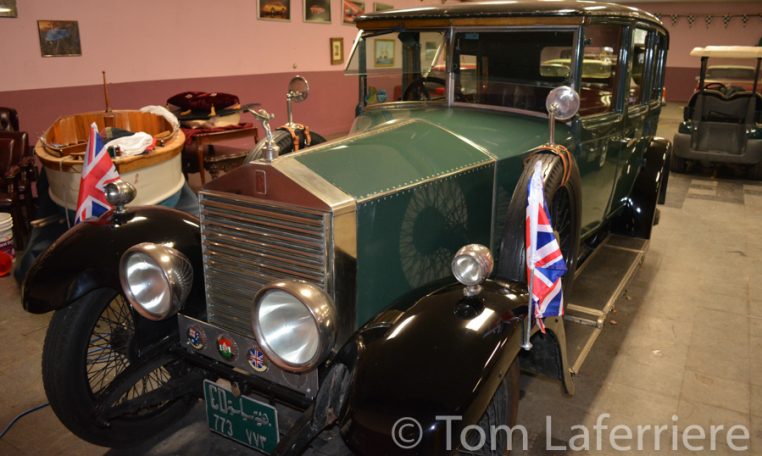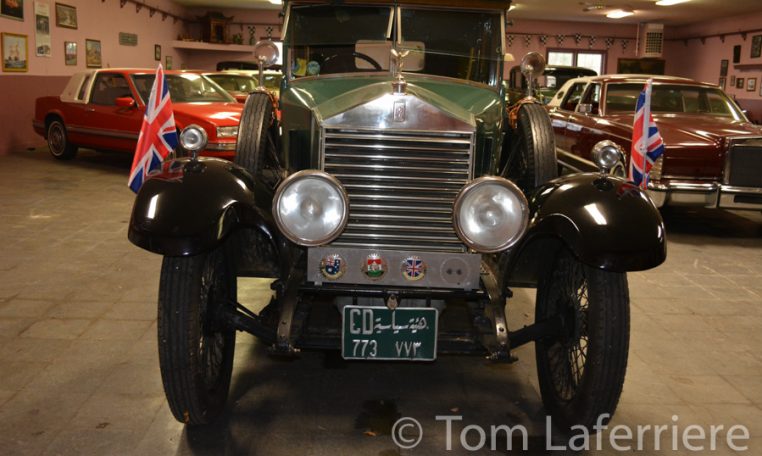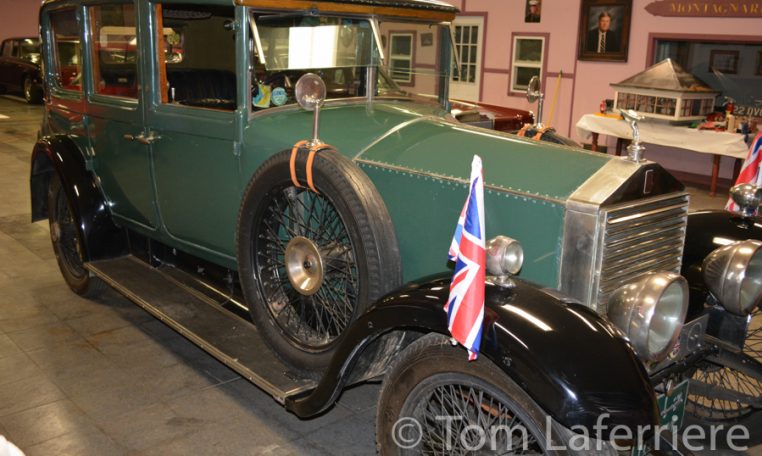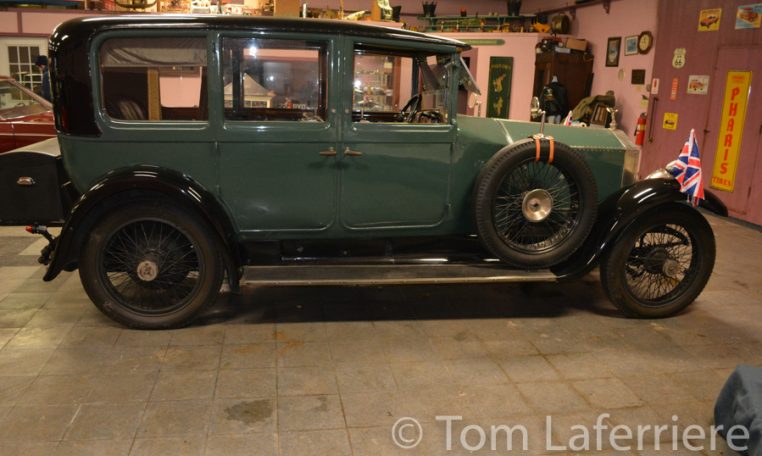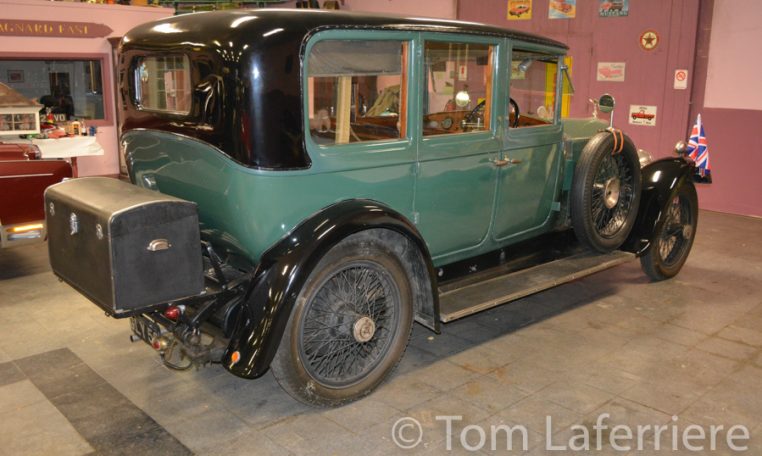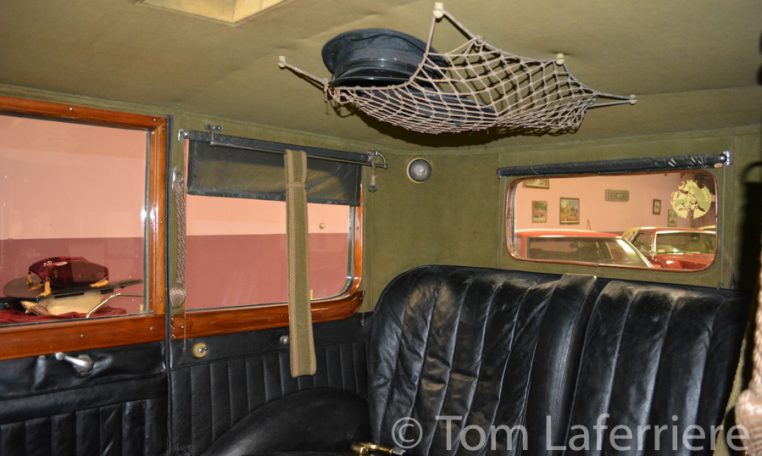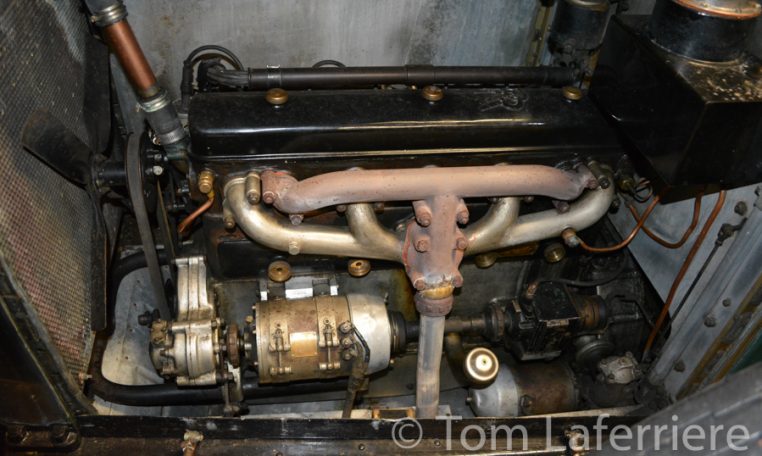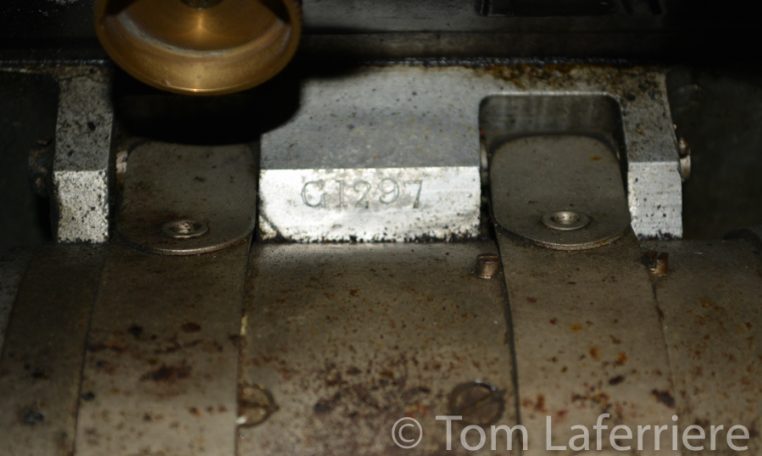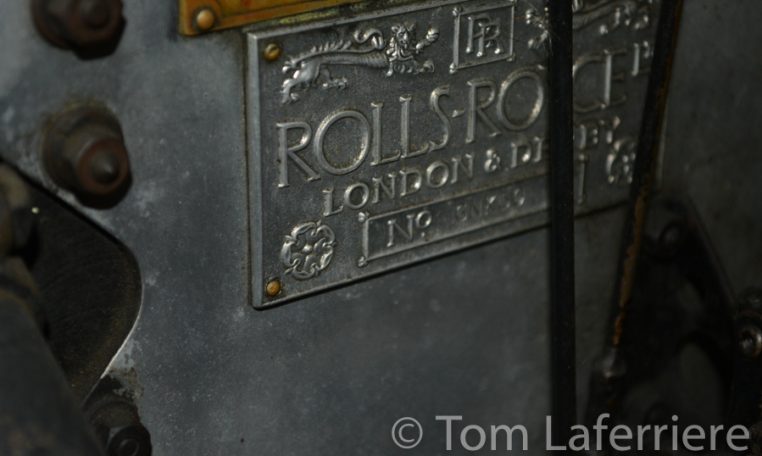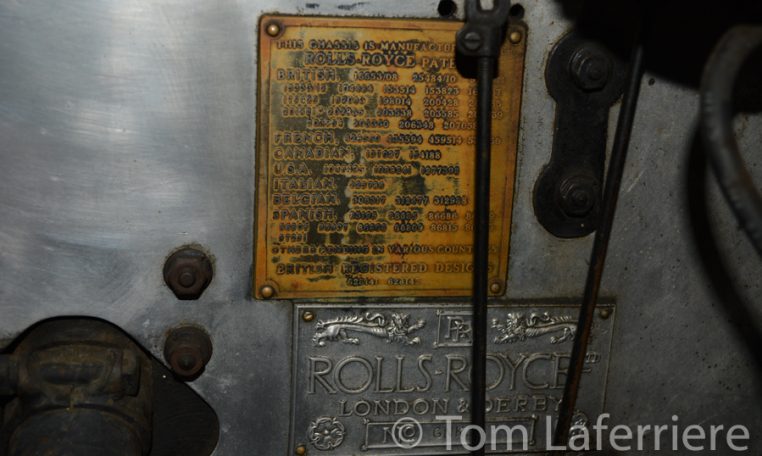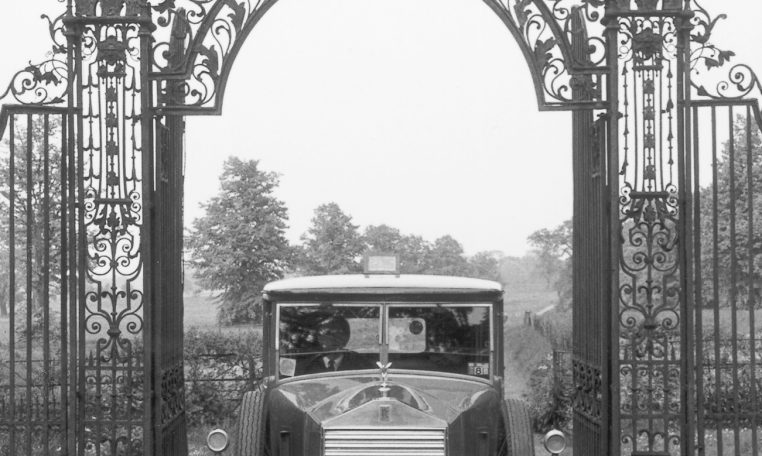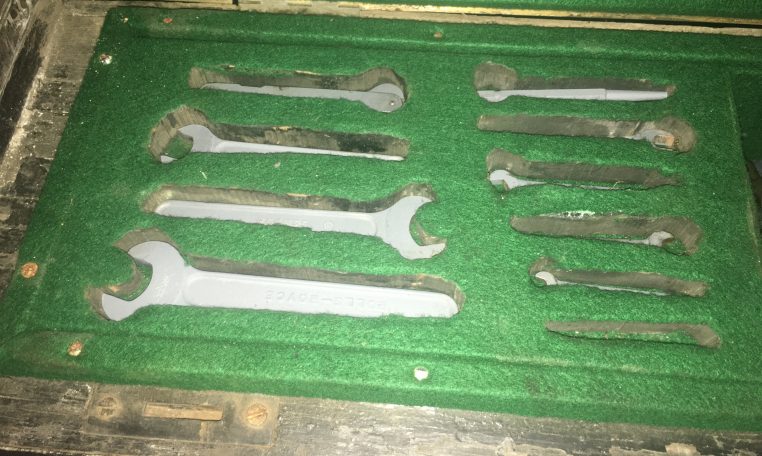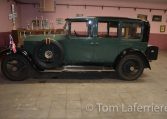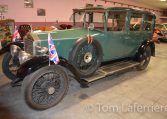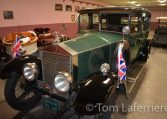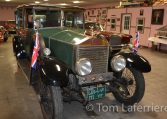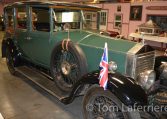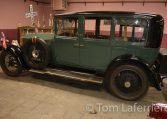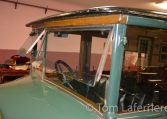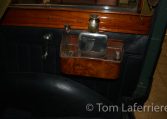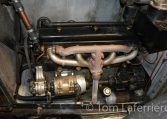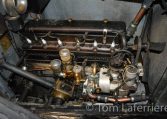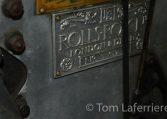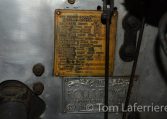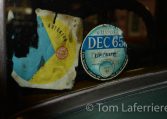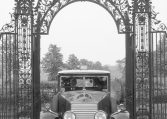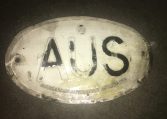1925 Rolls Royce Twenty with Park Ward Coachwork
A world traveling Rolls Royce1925 Rolls-Royce 20 hp Saloon
Coachwork by Park Ward
Chassis No.: GNK 50
Engine No. G1297
53 bhp, 3,127 cc overhead-valve inline six-cylinder engine, three-speed manual gearbox, solid front axle and live rear axle with semi-elliptic leaf springs, and two-wheel mechanical drum brakes. Wheelbase: 129 in.
The new 20 hp Rolls-Royce, sometimes called the “Baby Rolls,” arrived in October 1922. Intended for the owner-driver, differed from its older and larger Silver Ghost sibling in having a monoblock engine with overhead valves, a detachable cylinder head and coil-and-battery ignition. Initially built with an American-inspired three-speed center-change gearbox, it was modified for the more conventional four-speed with right-hand shift during 1925. Four-wheel brakes were instituted during that year as well. The model was built until 1929, at which time it was replaced by the more powerful 20/25.
Although smaller and less expensive than the Ghost and Phantom models, the Twenty was, like the larger Rolls, supplied as a chassis alone. Coachwork was typically supplied by the same bespoke suppliers who clothed the larger cars. A good many of these bodies came from coachbuilder Park Ward, long associated with the marque.
Park Ward & Co., Ltd., was established in 1919 by William MacDonald Park and Charles W. Ward at Willesden in northwest London. Both had formerly worked at F.W. Berwick, Ltd., maker of Sizaire-Berwick automobiles. By 1920, the firm was exhibiting at the Olympia Motor Show, and over the next few years built on such chassis as Crossley, Delage, Fiat and Sunbeam. Their first body for Rolls-Royce was built in 1920. In 1923, Rolls invited Park Ward to participate in a scheme to build standardized bodies for 20 HP chassis. The arrangement was never consummated, but a relationship was established that would extend into recent times. Along with Hooper and H,J. Mulliner, Park Ward became a primary supplier to Rolls-Royce, to the point of Rolls taking a minority interest in order to keep the coachbuilder going during the Depression years.
Rolls-Royce Twenty chassis GNK50 was ordered on January 24, 1925 by Park Ward & Co. for Mrs. A.E. Hill, whose address was given as Scott’s Hotel, Langham Street, London. Testing was completed by April 3rd, and the chassis sent to the coachbuilder on the 16th. John Fasal’s authoritative book The Rolls-Royce Twenty indicates that it was issued UK registration XY5030, a London issue from May or June of 1925. An early 1925 model, it was the three-speed center-change transmission and two-wheel brakes.
Mrs. Hill may have been visiting Britain, as the complete car was delivered by Park Ward on October 6, 1925, to the Steamship Demosthenes, bound for Sydney, Australia. There it apparently stayed for nearly four decades. In December 1963, the Rolls-Royce Owners’ Club of Australia reported that “Tony Strachan of Sydney left recently to tour Europe in his Park Ward 20 h.p. Having shipped the car to Athens, he will drive through Greece, Italy, France, Germany, Scandinavia and Spain before staying for some time in England.”
Strachan was reported having brought the car to an event at Goodwood in 1964. He returned to New South Wales without the car, as it was sold in England to Constantine Savalas of the U.S. Embassy at Grosvenor Square. It was given a diplomatic class registration and issued the number GLY5C, another London number, “C” being the suffix assigned to 1965.
Constantine Socrates “Gus” Savalas was born in 1920 in Garden City, Long Island, New York, the son of Nicholas and Christina Savalas. A survivor of the Pearl Harbor attack in December 1941, he escaped death again at the sinking of the U.S.S. Astoria in the Coral Sea in 1942. He then became a belly gunner on an Avenger torpedo bomber. Following World War II, he worked at the Voice of America, broadcasting behind the Iron Curtain during the Cold War. He later joined the U.S. Information Agency, working in Libya, Lebanon, Greece and parts of Africa. He may be most familiar today, however, as the older brother of Aristotelis “Telly” Savalas, an actor best known, among many cinema and television credits, as Kojak on the popular TV crime drama of that title. Gus Savalas was known as a talented singer and dabbled in theater as well, appearing in a few Kojak episodes with his brother.
Gus Savalas brought the Rolls Twenty to the United States in the late 1960s or early ’70s, when he lived in Alexandria, Virginia. It was later owned by Charles Gill of neighboring Arlington, Virginia, who kept it until 2012. It is currently in a New England collection.
The car exudes a patina that befits its age and service. The Park Ward aluminum body is straight and unblemished, its paint renewed some years ago in medium green over black fenders. The roof is painted to match the fenders. The interior, likely original, is done in black pleated leather and shows years of use but is untorn and exhibits just modest wear. The interior wood trim has been refurbished and varnished to a high luster; the headliner is done in mohair and the windows of the rear seat have pull-down roller shades. The floor has been recently refitted with gray carpet. The engine compartment is clean and serviceable, but not over-detailed.
Additional equipment includes dual sidemount spares with mirrors, a rear-mounted trunk, and the Spirit of Ecstacy “flying lady” atop the radiator. The car also wears badges of its overseas and diplomatic service, including auto club and other emblems from Australia, Hungary and the United Kingdom, as well as a diplomatic license plate from Egypt. On the windscreen is the tax disc issued in November 1965, matching the British registration plate at the rear.
In 2013, it appeared in the Ryan Casey movie “I’ll Be Seeing You,” filmed in Rhode Island and starring Marshall Berenson and Molly Bettencourt. Included is the car’s Owner’s Handbook, documentation of its origin and export, its repatriation to the UK in 1965 and various service records.
- There are no features available
This automobile has been sold, thank you for your business!
